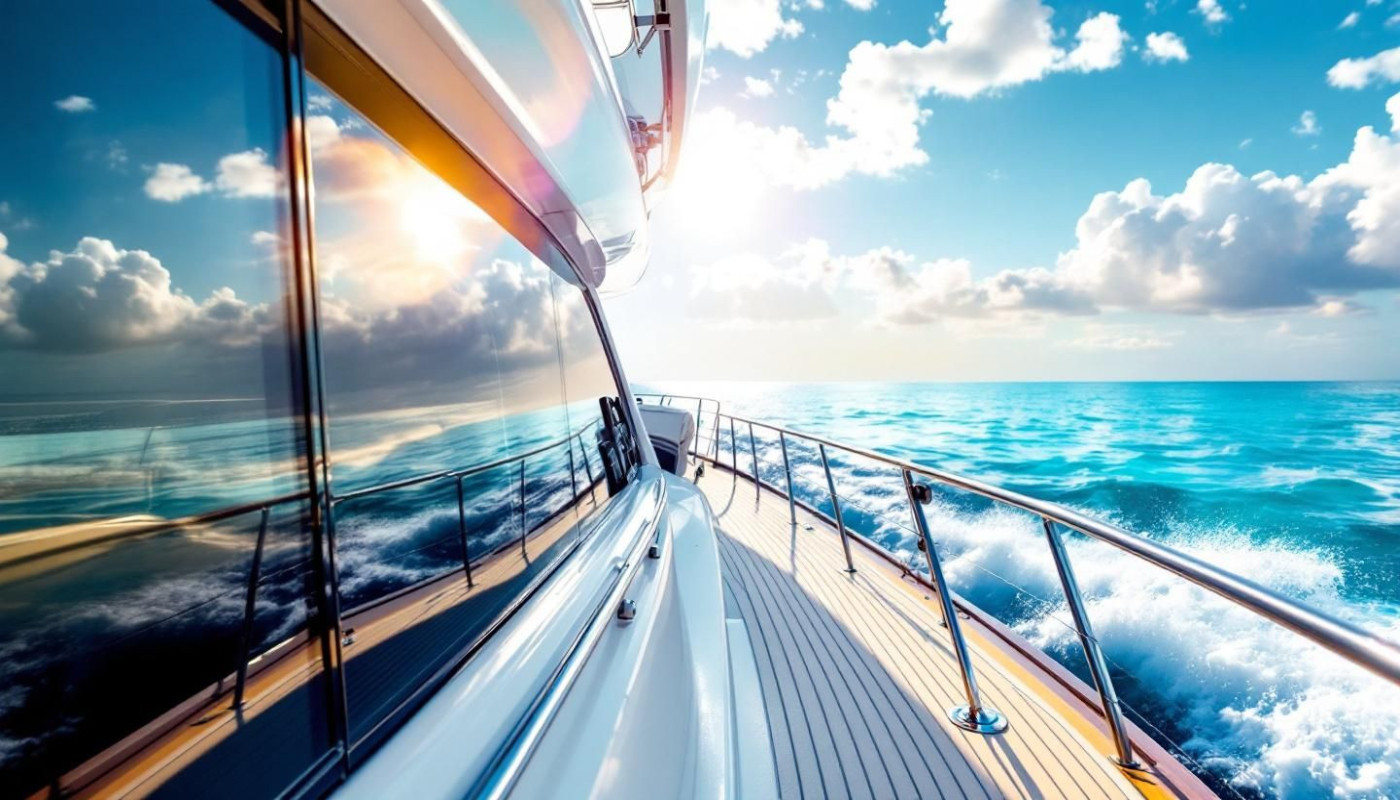Table of contents
Setting sail on a memorable voyage begins with selecting the perfect yacht tailored to your desires and needs. Navigating the world of yachts can be both thrilling and overwhelming, with a variety of options each offering unique features and experiences. Dive into the following sections to discover expert advice and technical insights that will guide you toward the ideal yacht for your next sailing adventure.
Understanding Yacht Categories
Exploring the world of yacht types reveals a variety of options, each designed for distinct experiences on the water. A sailing yacht prioritizes wind power, offering an authentic connection to the sea and a quieter, eco-friendly voyage. These vessels often feature a displacement hull, which moves through water rather than skimming atop it. This hull design allows for greater fuel efficiency and a smoother ride in choppy conditions. While a sailing yacht provides an immersive experience and can be handled by smaller crews, it typically offers less interior space and a slower pace compared to motorized options.
A motor yacht harnesses engine power for swift and comfortable travel, making it suitable for those seeking convenience, speed, and a higher level of onboard amenities. With planing or semi-displacement hulls, a motor yacht can achieve greater speeds and often features expansive decks and luxury cabins. The reliance on fuel and the associated operational costs, along with the noise and vibration from engines, are factors to keep in mind when considering this option. For guests who prioritize ease of navigation and want to cover greater distances quickly, a motor yacht stands out among yacht types.
The catamaran is renowned for its stability, achieved through its dual-hull construction. This feature makes catamarans particularly appealing for families or groups seeking a steady platform for relaxation, water sports, or island-hopping. Compared to a traditional sailing yacht or motor yacht, catamarans offer generous deck space and shallow drafts, allowing access to secluded anchorages. While the wide beam enhances comfort, it can also limit access to certain marinas. Furthermore, the storage and mechanical complexity of maintaining two hulls may require more attention during longer voyages.
For those interested in tradition and leisurely exploration, the gulet represents a unique category among yacht types. Originating from Turkey, this wooden vessel merges the charm of a classic sailing yacht with the versatility of modern engines, often featuring ample cabins and communal spaces for relaxed cruising. A gulet's displacement hull promotes smooth sailing, yet these yachts generally travel at lower speeds and are best suited to calm coastal journeys. Each yacht type—sailing yacht, motor yacht, catamaran, or gulet—offers a distinct blend of performance, comfort, and style, ensuring every traveler can find the vessel that perfectly matches their dream sailing adventure.
Assessing Crew And Comfort
Choosing the right yacht for a sailing adventure is greatly influenced by the number of people in the travel party and their collective expectations for yacht comfort. The LOA, or Length Overall, of a vessel determines not only the available space but also the capacity for yacht cabins, relaxation zones, and social areas. A larger group benefits from yachts with more cabins, each featuring en-suite bathrooms and privacy-enhancing layouts. Yacht amenities extend far beyond sleeping quarters; a well-equipped galley, climate control, advanced entertainment systems, and even Wi-Fi access can transform the onboard experience, offering both convenience and pleasure during longer journeys or when entertaining guests.
The choice between a crewed yacht and a bareboat charter is pivotal. A crewed yacht includes professionals who handle navigation, maintenance, and even gourmet meal preparation, allowing guests to fully relax and enjoy every element of yacht comfort without worry. This option is particularly attractive for those new to sailing or those desiring a higher level of service. Conversely, a bareboat charter invites experienced sailors to captain the vessel themselves, providing greater flexibility and privacy but requiring more hands-on participation from the party. The balance between independence and luxury should be carefully considered, as it directly impacts the overall satisfaction of the voyage.
Matching the travel party’s needs with the correct LOA and level of yacht amenities ensures everyone on board is accommodated comfortably. When evaluating options, consider not only the number of yacht cabins but also whether separate crew quarters are necessary, and how each vessel’s layout supports both group activities and quiet retreat. Ultimately, the right blend of space, amenities, and staffing transforms a simple trip into a memorable sailing adventure, perfectly tailored to the preferences of all guests.
Matching Destination With Yacht
Selecting the ideal yacht design for a sailing adventure hinges on a careful assessment of the chosen sailing destination. Weather patterns and sea state stand out as determining factors; mild, sheltered waters along coastlines favor yachts optimized for coastal cruising, such as those with moderate yacht draft and excellent maneuverability. Shallow-draft vessels are preferable in these regions, allowing access to inlets, bays, and anchorages where deeper-keeled boats might struggle. Coastal destinations often feature shifting sandbanks and variable depths, making a shallow draft not only convenient but a matter of safety and practicality.
When the journey extends beyond the coast to open-ocean or bluewater passages, the requirements change significantly. Here, robust bluewater yacht models with deeper keels, reinforced hulls, and advanced navigation systems offer superior stability and self-sufficiency for long stretches without landfall. A deeper yacht draft aids in tracking and steadiness in rougher offshore conditions, though it limits anchoring options in shallow coves. Local maritime regulations can also influence yacht choice; some destinations restrict larger drafts or specific designs. By aligning the yacht’s design to both the technical demands and regulatory environment of the sailing destination, one ensures safety, comfort, and the greatest freedom to explore.
Evaluating performance and handling
Yacht performance plays a decisive role in shaping the experience of any sailing adventure. Key factors such as speed, fuel efficiency, and maneuverability are not only linked to comfort but also to safety and the range of destinations that can be reached. For example, faster yachts with greater fuel efficiency are better suited for covering longer distances or reaching remote anchorages, while maneuverable vessels excel in tight harbors and complex waterways. Yacht handling is influenced by both hull type and rigging system. Monohulls, known for their traditional single-hull design, usually offer a classic sailing feel with a pronounced heel, making them responsive but sometimes more challenging for newcomers. Catamarans and trimarans, in contrast, deliver stability and spaciousness, often favored for leisure cruising and family trips. The choice of rigging system—whether sloop, ketch, or schooner—further affects how the sails are managed and how the yacht responds to varying wind conditions, which is vital knowledge for those interested in optimizing their voyage.
Technical considerations extend to the understanding of specific hull types, such as the planing hull, which is engineered to rise and glide across the water at higher speeds, dramatically reducing drag and enhancing overall yacht performance. In moderate sea conditions, a planing hull offers the excitement of speed and is often found on power yachts designed for thrill and efficiency. Conversely, displacement hulls are built for comfort and stability rather than speed, making them suitable for extended, relaxed journeys. Master skippers with decades of yachting expertise consistently highlight how the right match between hull type, rigging system, and the intended itinerary is fundamental for a rewarding sailing experience. To explore a comprehensive selection of vessels and discover expert advice on yacht handling, visit browse around this site for valuable insights and booking opportunities.
Budgeting For Your Adventure
Establishing a clear yacht budget significantly impacts the selection process, as the total yacht charter cost extends far beyond the initial price. Prospective sailors need to account for yacht maintenance, fuel consumption, crew salaries, and unexpected repairs, collectively known as yacht running costs. These recurring operational expenses can quickly add up, especially with larger or more sophisticated vessels such as a luxury yacht. Balancing opulence with practicality is key: opting for a vessel with lavish interiors and advanced amenities may enhance comfort, but it also elevates running costs, both in terms of fuel efficiency and specialized maintenance requirements.
Comparing different yacht types enables a more strategic approach to budgeting, weighing factors like engine size, age of the yacht, and technical complexity. For instance, motor yachts often incur higher fuel and maintenance expenses compared to sailing yachts, but may provide greater speed and onboard services. To optimize enjoyment without endangering safety or straining finances, prioritize yachts that match both experience expectations and budgetary boundaries. Evaluating the full spectrum of yacht running costs ensures that every aspect, from mooring fees to regular servicing, is considered, preventing financial surprises during the adventure.
Conducting thorough research and consulting with reputable charter companies or financial advisors specializing in yachting can clarify all potential expenses. Transparent communication about the desired balance between luxury features and essential functionality will guide the selection toward a vessel that offers both satisfaction and financial sustainability. Informed decision-making in this area allows for a worry-free sailing adventure, where the focus remains on enjoyment and exploration rather than unplanned costs or maintenance setbacks.
On the same subject

Exploring The Uniqueness Of Private Art Museum Tours

tranquil meditation retreats in the indian himalayas serene getaways for spiritual growth

Exploring The Benefits Of Seasonal Travel With Local Festival Experiences

Exploring The Hidden Gems: Unique Family-Friendly Attractions In NYC's Five Boroughs

